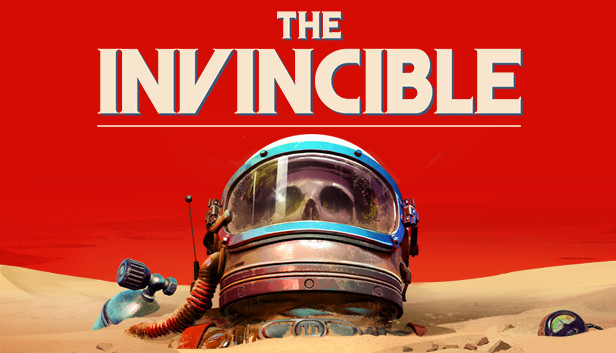I should like to register a complaint! This is not the body I was issued at birth. It’s not even the body I had been carefully maintaining until 2019. I’d like to send it back and have a new one issued, but unfortunately that’s not possible.
One healthy thing to which my recent vacation re-introduced me was yoga. Omaha and I used to do yoga for a few years while the kids were still at home, but when I discovered weightlifting I sorta dropped out of the yoga class and she didn’t want to go alone. There was a yoga class on the cruise ship, and I discovered that I enjoyed it enough to go home and pick it up again.
Being ADHD, I arranged all my triggers. For years, my habit is to hang tomorrow’s clothes on a hook inside the bathroom door. Now I hang my yoga clothes in front of those, and when I head out of the bedroom there’s a bottle of cold water already in the ’fridge and my mat, my iPad, and a fully charged set of workout headphones are waiting for me. (These come under the heading of “reduce environmental friction” and “force the next action” under the “managing ADHD” banner.)
And for three weeks, I’ve been at it every day, using a nice enough app on my iPad. It’s just a 15-minute beginner class, and I had to downgrade from “beginner 2” to “beginner 1” because I’m so far behind on my exercise it’s not even worth mentioning. I’m a wreck.
The one thing I discovered, and the reason I downgraded, was that I have absolutely no sense of balance anymore. The reason I downgraded from beginner 2 to 1 was that I kept falling over doing the one-legged poses! I used to be a flamingo, able to stand on one foot for an hour or more, often in what yogis call “tree pose,” without even noticing; now I can’t hold a tree pose for more than five seconds without falling over. Hell, I was having trouble holding a goddamn straight-line two-legged lunge, the kind where you put your feet exactly in line, so you have no left-right stabilizers other than your sense of balance.
Given that not being able to hold your balance is associated with early death, I’ve been pretty determined to get it back. The good news is that even after three weeks, I’m no longer falling over during a lunge.
I’ve also noticed that the force-of-will “relax” habit that I’ve been developing as part of my daily meditation practice is no longer necessary. Yoga is teaching my body how to relax, and when to tense up, refusing to carry the tension of the day inside my skin. I’m no longer trembling at the beginning of the exercise, with a sense of calm and readiness that wasn’t there three weeks ago.
I have noticed that the places where my muscles have tightened unacceptably is strange… I can do some stretches with ease, like pressing my feet together and putting my knees to the floor, but if I try to do a shoelace pose, stretching forward while my knees are stacked… I can’t. I just can’t move at all. That chain from my back to my knee is frozen, and it’ll be weeks before I get it stretched out properly.
But overall, this has been interesting. If I make it to the end of next week, I’ll have gone four weeks with this practice, and maybe that’ll make it a routine. Then I’ll have to up either the time or the difficulty, or both. But dammit, I need not to lose my balance, by strength, or my flexibility. Those get harder to hold on the older you get, but I was doing so well until Covid tried to kill me. I’m still not gonna let that damn germ win.
One healthy thing to which my recent vacation re-introduced me was yoga. Omaha and I used to do yoga for a few years while the kids were still at home, but when I discovered weightlifting I sorta dropped out of the yoga class and she didn’t want to go alone. There was a yoga class on the cruise ship, and I discovered that I enjoyed it enough to go home and pick it up again.
Being ADHD, I arranged all my triggers. For years, my habit is to hang tomorrow’s clothes on a hook inside the bathroom door. Now I hang my yoga clothes in front of those, and when I head out of the bedroom there’s a bottle of cold water already in the ’fridge and my mat, my iPad, and a fully charged set of workout headphones are waiting for me. (These come under the heading of “reduce environmental friction” and “force the next action” under the “managing ADHD” banner.)
And for three weeks, I’ve been at it every day, using a nice enough app on my iPad. It’s just a 15-minute beginner class, and I had to downgrade from “beginner 2” to “beginner 1” because I’m so far behind on my exercise it’s not even worth mentioning. I’m a wreck.
The one thing I discovered, and the reason I downgraded, was that I have absolutely no sense of balance anymore. The reason I downgraded from beginner 2 to 1 was that I kept falling over doing the one-legged poses! I used to be a flamingo, able to stand on one foot for an hour or more, often in what yogis call “tree pose,” without even noticing; now I can’t hold a tree pose for more than five seconds without falling over. Hell, I was having trouble holding a goddamn straight-line two-legged lunge, the kind where you put your feet exactly in line, so you have no left-right stabilizers other than your sense of balance.
Given that not being able to hold your balance is associated with early death, I’ve been pretty determined to get it back. The good news is that even after three weeks, I’m no longer falling over during a lunge.
I’ve also noticed that the force-of-will “relax” habit that I’ve been developing as part of my daily meditation practice is no longer necessary. Yoga is teaching my body how to relax, and when to tense up, refusing to carry the tension of the day inside my skin. I’m no longer trembling at the beginning of the exercise, with a sense of calm and readiness that wasn’t there three weeks ago.
I have noticed that the places where my muscles have tightened unacceptably is strange… I can do some stretches with ease, like pressing my feet together and putting my knees to the floor, but if I try to do a shoelace pose, stretching forward while my knees are stacked… I can’t. I just can’t move at all. That chain from my back to my knee is frozen, and it’ll be weeks before I get it stretched out properly.
But overall, this has been interesting. If I make it to the end of next week, I’ll have gone four weeks with this practice, and maybe that’ll make it a routine. Then I’ll have to up either the time or the difficulty, or both. But dammit, I need not to lose my balance, by strength, or my flexibility. Those get harder to hold on the older you get, but I was doing so well until Covid tried to kill me. I’m still not gonna let that damn germ win.



 Fanfic, even authorized fanfic, can be a risky venture. I've often made that point myself as a writer of fanfic, and as a reader. Making a fanfic video game out of a beloved work from a deeply respected genre master is especially treacherous. And yet,
Fanfic, even authorized fanfic, can be a risky venture. I've often made that point myself as a writer of fanfic, and as a reader. Making a fanfic video game out of a beloved work from a deeply respected genre master is especially treacherous. And yet, 